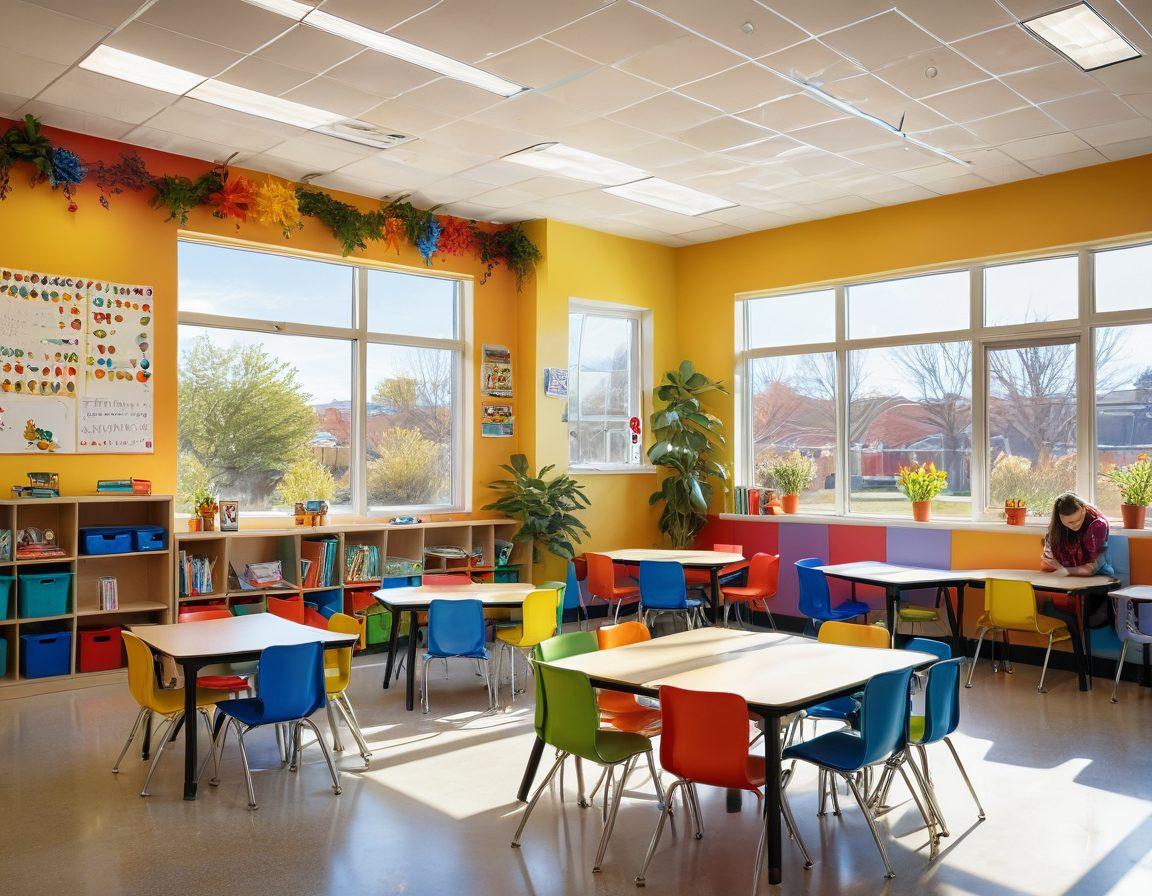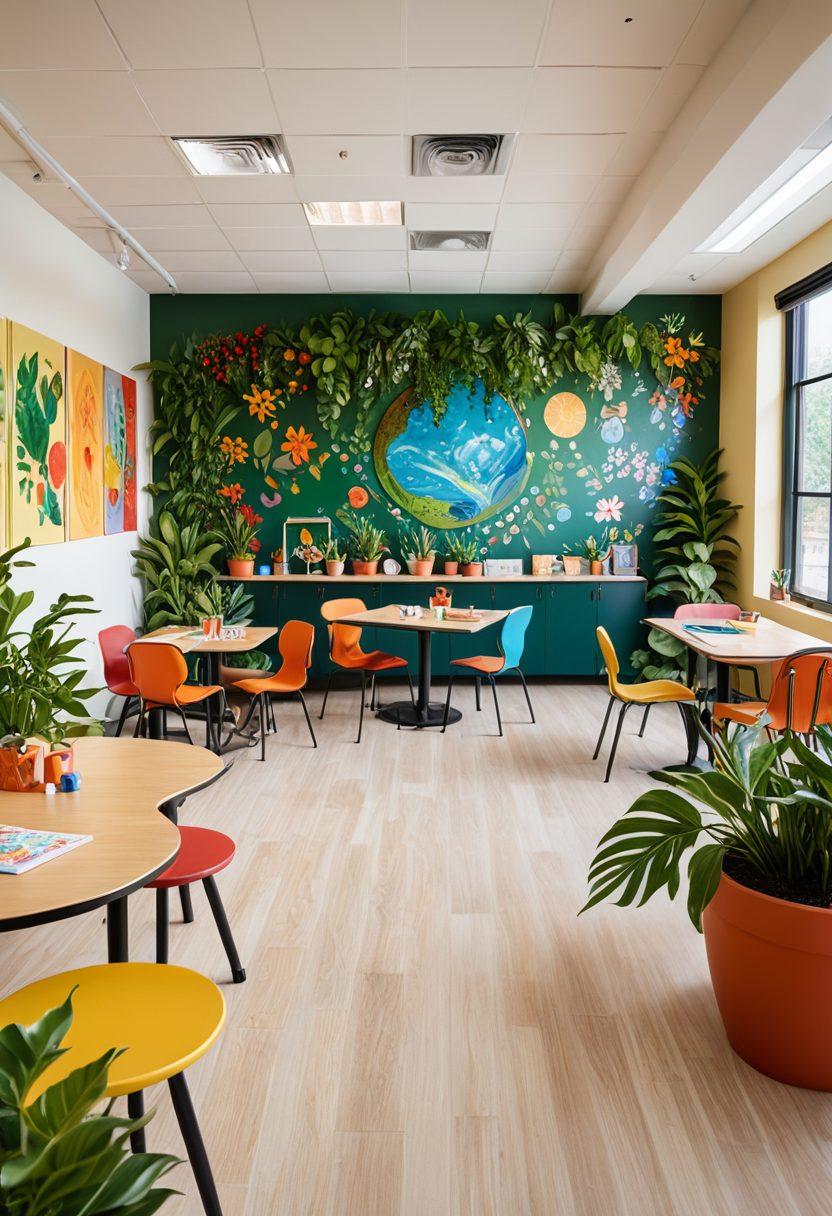Creating a Joyful Learning Environment: Tips for Uplifting School Spirit and Student Well-being
In the heart of every educational institution, whether it's a small academy or a large learning center, lies an unyielding desire to create a joyful and positive environment. Think about your own school days—what sparked your interest? Perhaps it was an enthusiastic educator who inspired you, or maybe it was the delightful atmosphere filled with cheerful laughter and collaborative learning. As we look to harness happiness in our schools, it’s important to reflect on the strategies that can uplift school spirit and enhance student engagement, transforming classrooms into blissful spaces of knowledge and child development.
The first step toward fostering a positive environment is recognizing the power of community learning. How often do we cite the value of collaboration among teachers, students, and families? In a harmonious educational setting, everyone plays a vital role. Family engagement can double as a resource for enrichment in youth programs, leading to academic success. Encouraging parents to participate in school activities not only strengthens bonds but also cultivates a sense of collective responsibility and enthusiasm for learning. After all, who doesn’t want their child to thrive in an uplifting atmosphere?
Creating a cheerful and content classroom requires a thoughtful curriculum that prioritizes a holistic approach to education. Instead of focusing solely on teaching to the test, consider weaving in elements that promote social-emotional learning. This might include mindfulness activities, playful interactions, or even empathy exercises. By prioritizing student well-being and incorporating insights into child development, educators lay the groundwork for a transformative learning experience. Can you imagine how engaged and delighted students would be knowing their emotional needs are just as important as their academic pursuits?
Furthermore, an essential aspect of harnessing happiness within schools lies in encouraging students to take ownership of their learning. Creating opportunities for student-led initiatives can unleash passion and creativity. Think about organizing a student council that focuses on school spirit—what if they planned monthly celebrations that recognize academic achievements or milestones? How might the involvement of students in decision-making processes positively impact their enthusiasm for schooling? The answer lies in empowering students to cultivate a culture of joy and positivity within their communities.
In the end, the goal of every educational institution should be to create a nurturing space that fosters growth, knowledge, and happiness. By implementing strategies such as enriching programs, enhancing parental engagement, and prioritizing emotional welfare, we can build an academy where students feel supported and valued. The journey of education is inherently fulfilling, and together, we can pave the way for a future where students not only succeed academically but also find true delight in their learning experiences. Let's commit ourselves to building cheerful, blissful learning environments that spark joy every single day!
Building Blissful Classrooms: How Positive Environments Enhance Learning
In the world of education, creating a joyful learning environment is paramount. Imagine a classroom where laughter flows as freely as knowledge, and where students are not just passive recipients of information but active participants in their own journey of enlightenment. This isn't just a lofty ideal; rather, it’s a vibrant reality waiting to be embraced by every educator in their beloved academy or educational institution. How do we cultivate such blissful classrooms that foster academic success while enhancing the wellbeing of our students? Let's explore the pathways that lead to a cheerful and content atmosphere—because after all, a happy learning environment is key to student engagement and growth.
At the heart of a positive classroom environment lies an understanding of child development. Teachers must know that when students feel secure and delighted in their surroundings, they are more likely to reach for the stars in their educational pursuits. This underscores the importance of implementing youth programs and community learning initiatives that engage both students and families. Have you ever wondered how a simple shift in classroom atmosphere can transform lives? Take a moment to picture a student who walks into a classroom buzzing with enthusiasm—perhaps decorated with student artwork or vibrant colors, filled with the sounds of cheerful chatter. This student is more likely to be actively engaged in their curriculum and demonstrate feelings of academic success.
As educators, we hold the power to create uplifting classroom dynamics. Consider adding playful activities to your daily schedule—whether that’s incorporating role-playing into a lesson plan or creating a friendly competition that brings out the best in your students. These enriching activities not only foster joy but also encourage collaboration among students, reinforcing the importance of teamwork. Questions like, ‘What’s one thing you enjoyed from our last lesson?’ can not only invite feedback but also develop a relationship of trust between students and teachers, enhancing the overall educational experience.
Family engagement is another cornerstone of a joyful learning environment. When families are involved in school activities, students feel supported and valued, which builds their confidence and happiness. Think about hosting engaging family literacy nights or interactive workshops where parents can learn how to support their child's education at home. Doing so will not only boost school spirit but also create a strong community that is committed to student success. By uniting school and home, we provide a fertile ground for happy learning and a blissful atmosphere that nurtures every student.
Ultimately, building blissful classrooms requires deliberate effort and a keen understanding of the needs of our students. In your role as an educator, embrace the challenge to create environments that are not only focused on academic achievement but are also designed to promote mental and emotional wellbeing. Remember, every child deserves a cheerful space to grow, learn, and thrive. So ask yourself, how can you begin to cultivate an uplifting environment in your classroom today? The possibilities are as limitless as the knowledge waiting to be explored. Let’s champion joyful education for our young scholars and watch as they soar towards their dreams!
Uplifting Education: Creating Cheerful Spaces for Student Success and Well-Being
In today’s educational landscape, it becomes increasingly vital to create an uplifting atmosphere that not only enhances learning but also fortifies student well-being. A joyful learning environment is like a vibrant tapestry, woven with the threads of positivity, community, and enthusiasm. Picture a classroom where students radiate happiness, teachers are like guiding stars, and every experience contributes to their enlightenment. As educators, we often ask ourselves: How can we turn our academy into a sanctuary of cheerfulness, fostering academic success and personal growth?
To stir a sense of joy in our educational institutions, we must first acknowledge that atmosphere matters. A cheerful and uplifting learning space facilitates knowledge acquisition and promotes child development. Think about it: when students enter a classroom adorned with colorful art, inviting seating, and natural light, how do they feel? Delighted, motivated, and ready to embrace their curriculum! Strategically incorporating playful decorations and hands-on learning materials can significantly enhance the content delivered in a lesson, making it memorable and engaging. Don't forget—enrichment opportunities lie not just in textbooks, but in how we present information!
In addition to the physical environment, we can boost school spirit by actively engaging families in the community learning process. Regular family engagement fosters bonds, promotes transparency, and creates a support system for students. What would happen if schools organized cheerful community activities or open houses that highlight students' talents? Imagine parents and educators coming together with beaming smiles, celebrating achievements and inspiring one another. This sense of belonging contributes immensely to students' happiness and well-being, allowing them to thrive academically and socially.
Moreover, let’s touch on the power of positivity in our teaching styles. A cheerful educator sets the tone for the entire classroom dynamic, making learning not just an academic pursuit but a joyful journey. So, how can teachers infuse their personalities into the curriculum? Start with encouragement—simple affirmations and acknowledgement of effort can lead to extraordinary results. When a student feels valued, they grow more invested in their educational journey, paving the way for both personal and academic success. Sprinkling moments of fun into lessons can transform even the most mundane topics into delightful adventures!
Ultimately, uplifting education transcends just academic achievements; it nurtures the holistic well-being of students. Whether through playful learning methods, vibrant classrooms, or community-driven initiatives, every effort contributes to creating an environment where learners feel joyous and empowered. As educators, let’s embrace our roles as creators of these impactful spaces, always asking ourselves how we can further elevate the spirit of our classrooms. Remember, a happy learning environment is not just an ideal; it’s a delicious recipe for every student’s success!


